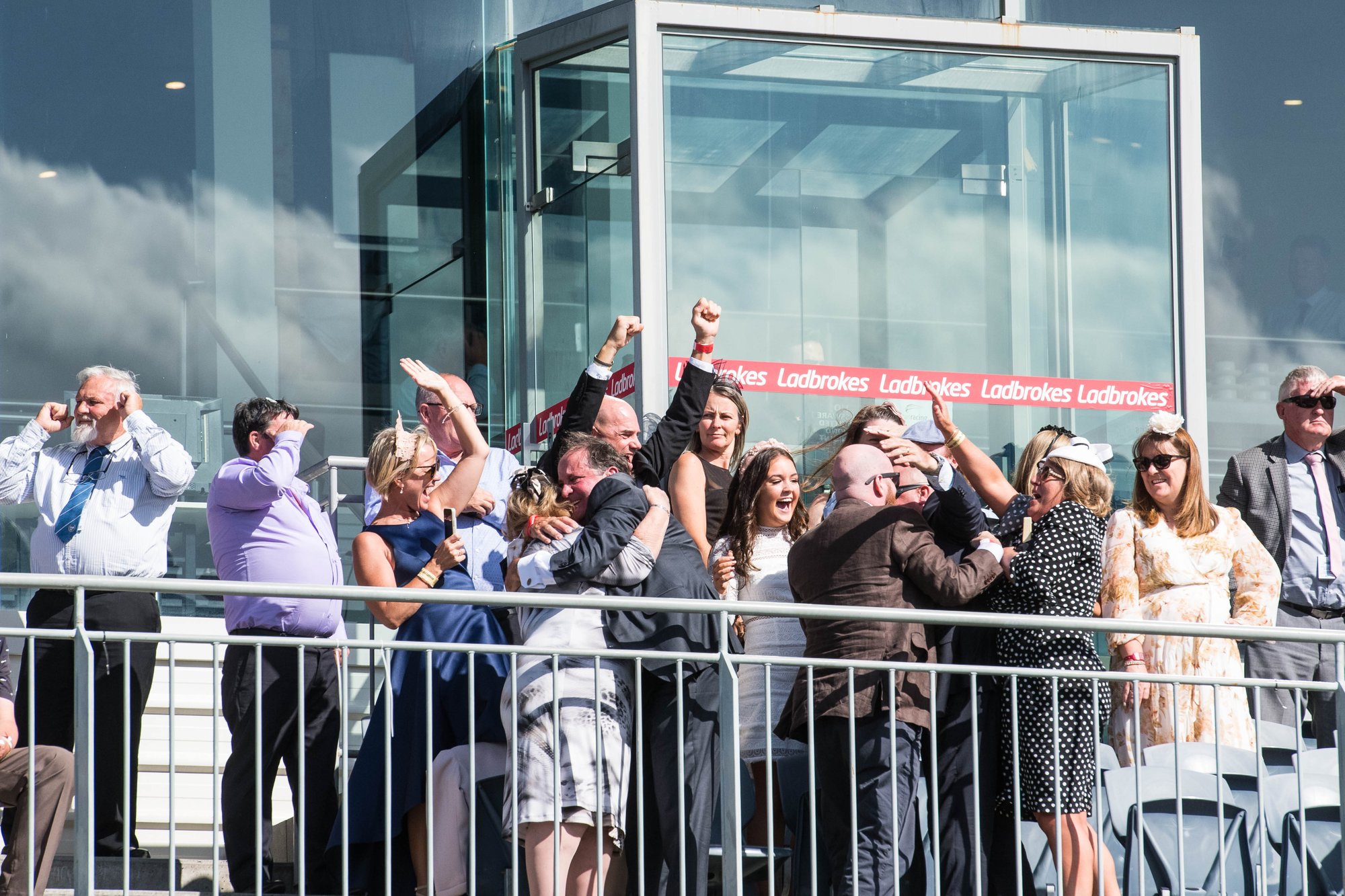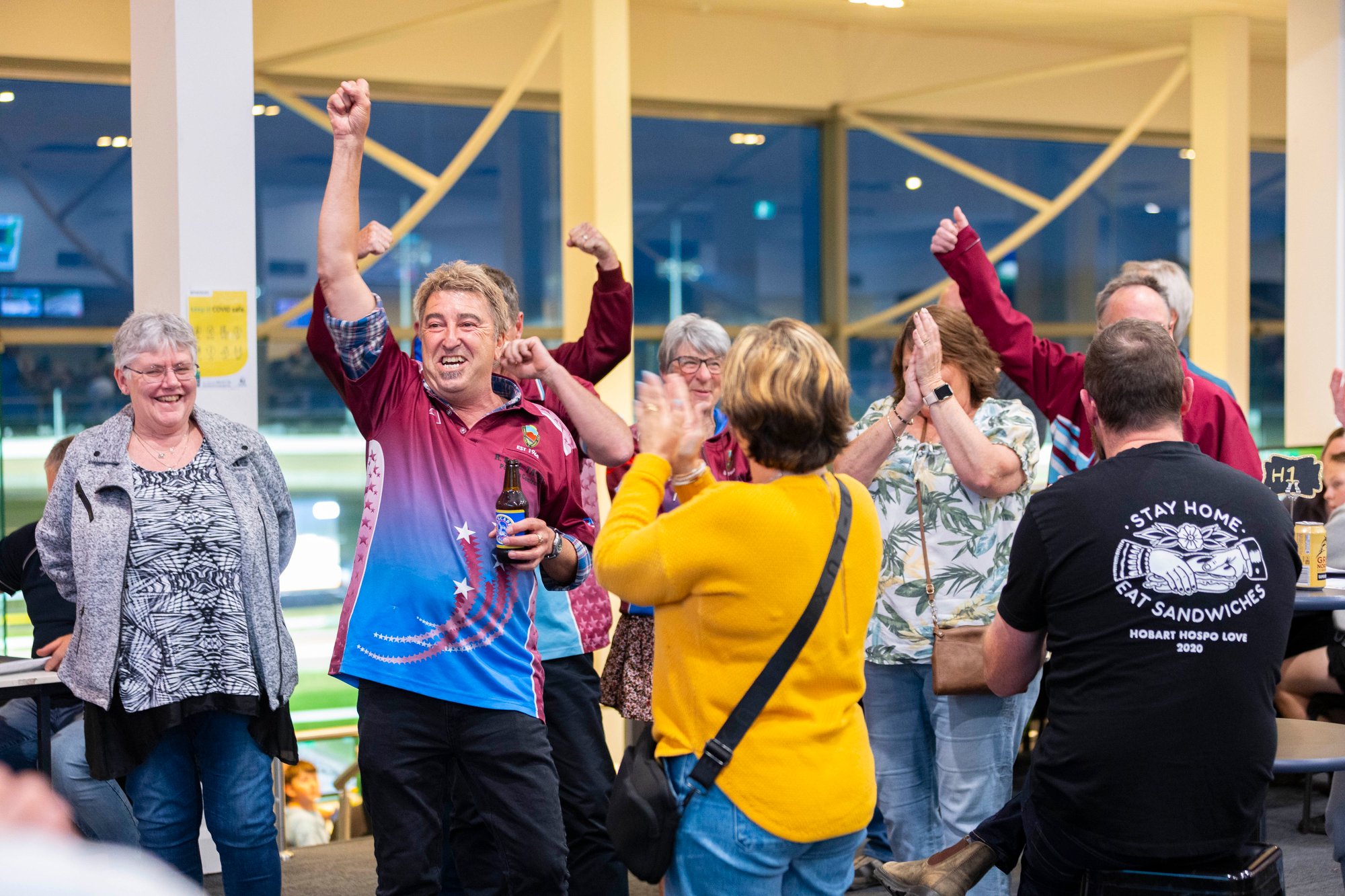You can own a racehorse in Tasmania. It's more accessible than you think, and our racing community makes it easier to get started and stay involved.
Racehorse ownership puts you at the centre of the action. You'll know your trainer, meet other owners, and get genuinely involved in your horse's journey. At tracks from Elwick to Mowbray and Devonport, you'll recognise faces and build connections that last.

Why Tasmania Works for Owners
Tasmania's tight-knit racing scene is an advantage for anyone getting into ownership. Your trainer's phone number is in your contacts, you can visit the stables whenever you arrange it, and you're actually part of what's happening rather than watching from a distance.
The Tasbred scheme makes ownership financially viable too. Win an eligible race and the bonuses stack up fast: $20,000+ for thoroughbreds, $10,000+ for harness. Plenty of owners have bought a horse and won their money back with a maiden victory, which changes the equation entirely.
How to Get Involved
Shares with Trainers
Most owners start by buying a share in a horse through their trainer. Trainers purchase horses and offer shares to their stable clients, typically anywhere from 5% to 50% depending on what's available and what suits your budget and level of involvement.
You own a percentage of the horse, which means you pay your percentage of the costs and collect your percentage of the prizemoney. Your trainer manages the day-to-day decisions and keeps you informed about how your horse is tracking, when it's likely to race, and what the plan is moving forward.
For thoroughbreds in full training, costs run around $3,000 to $4,000 per month per horse. A 5% share means roughly $200 a month, though when the horse is spelling (resting between racing campaigns), costs drop to around $600 per month, or $30 for that same share.
Harness horses are cheaper to train, usually around $1,500 to $2,000 per month, and shares work the same way. Training costs vary between stables and depend on the level of care required, so your trainer can give you specific figures for their operation.
The best way to start is to find a trainer you like and ask them about opportunities in their stable. They can talk you through what's available, what's involved, and whether ownership through their stable is a good fit for you.
Syndicates
Syndicates operate similarly to shares but are run by licensed syndicate managers rather than trainers. MyRacehorse is coming to Tasmania and will offer syndicate opportunities for those wanting a more structured, managed ownership experience with potentially larger groups of owners.
Partnerships
You can also partner with friends, family, or work colleagues to own a horse together. Up to 20 people can jointly own a horse, splitting the costs between you and experiencing ownership as a group.
Leasing
Lease a horse for a set period if you're not ready to buy. You cover training and racing costs during the lease term but avoid the upfront purchase price, which makes it a lower-risk way to experience ownership.
Sole Ownership
Buy the horse outright if you want complete control. You make all the decisions, carry all the costs, and take all the prizemoney. You'll work directly with your trainer on everything from the horse's name to its racing program and long-term plans.
.png?width=2000&height=1414&name=Eliza%20Howlett%20Photography%20(86).png)
.png?width=2000&height=1414&name=Eliza%20Howlett%20Photography%20(89).png)
What It Costs vs What You Can Win
Thoroughbreds race for prizemoney ranging from $20,000 to as much as $250,000 for our feature Cup races. With the Tasbred bonus scheme, horses can win as much as $40,000 in their first win. Thoroughbreds generally cost more to train and race for bigger prizes, but they can be more selective about when and how often they race.
Harness races carry prizemoney between $9,000 and $15,000, with feature races up to as much as $150,000. Harness horses are generally hardier and can race more frequently than thoroughbreds, which means more opportunities to compete and potentially more regular returns throughout the year.
Training costs are an ongoing investment, but the combination of prizemoney and Tasbred bonuses means wins can actually return significant money to your pocket.
Tasbred: The Bonus Scheme
Tasbred rewards owners who race locally bred or reared horses, and the bonuses are substantial enough to make a real difference.
Thoroughbreds win $20,000 bonuses ($16,000 to the owner, $4,000 to the breeder) with over $2 million available annually across all maiden races. There are plenty of opportunities throughout the racing calendar.
Harness horses collect $10,000 for a first win ($6,000 to the owner, $4,000 to the breeder), with an additional $5,000 if that win comes as a two-year-old. The Tasbred Sires Stakes adds another $548,000 across the season for young horses coming through the grades.
Horses bought at the Magic Millions Tasmanian Sale often qualify for Tasbred. Win a Tasbred maiden and you can cover a significant chunk of your initial investment in one race, which is why so many owners target Tasbred-eligible horses.
Thoroughbred or Harness?
Thoroughbreds generally race on Sundays, Wednesdays, and Friday nights across Tasmania. Horses typically start racing from age two and can race until they are as old as 12, but in reality most finish their career by the age of 7 or 8. Race distances vary from 1000m sprints to 2400m staying tests. Thoroughbreds generally cost more to train but race for bigger prizemoney, and major days like the Cup meetings are highlights of the racing calendar.
Harness racing generally runs on Friday nights and Sunday twilights. Standardbred horses are generally hardier than thoroughbreds, which means they can race more frequently and often have longer careers. Drivers and horses work as a team, and the racing involves more strategy and positioning throughout the race.
Both codes qualify for Tasbred bonuses, both have strong followings in Tasmania, and some people own horses in both. It really comes down to what appeals to you and what fits your budget.

What You Get as an Owner
Free race day entry for you and a guest when your horse runs. Access to owners' areas at the track where you can watch with other owners and connect with people in the same situation. You can visit the stables by arrangement, watch trackwork sessions, and be in the mounting yard before the race to meet the jockey or driver and see your horse prepared.
If you win, you're in the winner's circle for the photos and celebrations, which is a genuine thrill no matter how many times you experience it.
Your trainer keeps you updated regularly about how the horse is working, when it's likely to race next, any issues that come up, and what the plan is moving forward. You're involved in the decisions that matter and you're kept in the loop throughout the process.
And there's the Racing Owners Club Tasmania (ROCT), which is free to join for anyone who owns a share in a Tasmanian racehorse. ROCT operates at all thoroughbred meetings and selected harness meetings, with dedicated hosts across the state who look after owners on race day. It's a space to connect with other owners, enjoy proper hospitality, and feel like you're part of the racing community rather than just watching from the grandstand. Find out more about ROCT and register here.
Getting Started
If you're interested in exploring ownership, here's how to move forward.
Watch the owner stories on this site. Real Tasmanians talking about their experiences, what it costs, what it's actually like, and whether it's worth the investment. They'll give you an honest picture of what ownership involves.
Go to a race meeting and get a feel for the atmosphere. Our ROCT hosts will be on course at all thoroughbred meetings and an increasing number of harness meetings, and they can help you learn more about ownership, introduce you to current owners, and answer any questions you have. It's a great way to immerse yourself in the racing community and see what ownership actually looks like before you commit.
Find a trainer you like. This is the key step because your trainer will be your main point of contact throughout your ownership journey. Ask them about opportunities in their stable and what's involved. Most trainers are happy to talk to potential new owners about the realities of ownership and whether they have horses that might suit your situation.
Ready to take the next step? If you're interested in learning more about ownership or need help connecting with trainers in your area, email ownership@tasracing.com.au and we'll point you in the right direction.
Ownership isn't just for the wealthy or the experienced. It's for anyone who wants to be involved in Tasmanian racing. Have a look, ask some questions, and see if it's for you.
